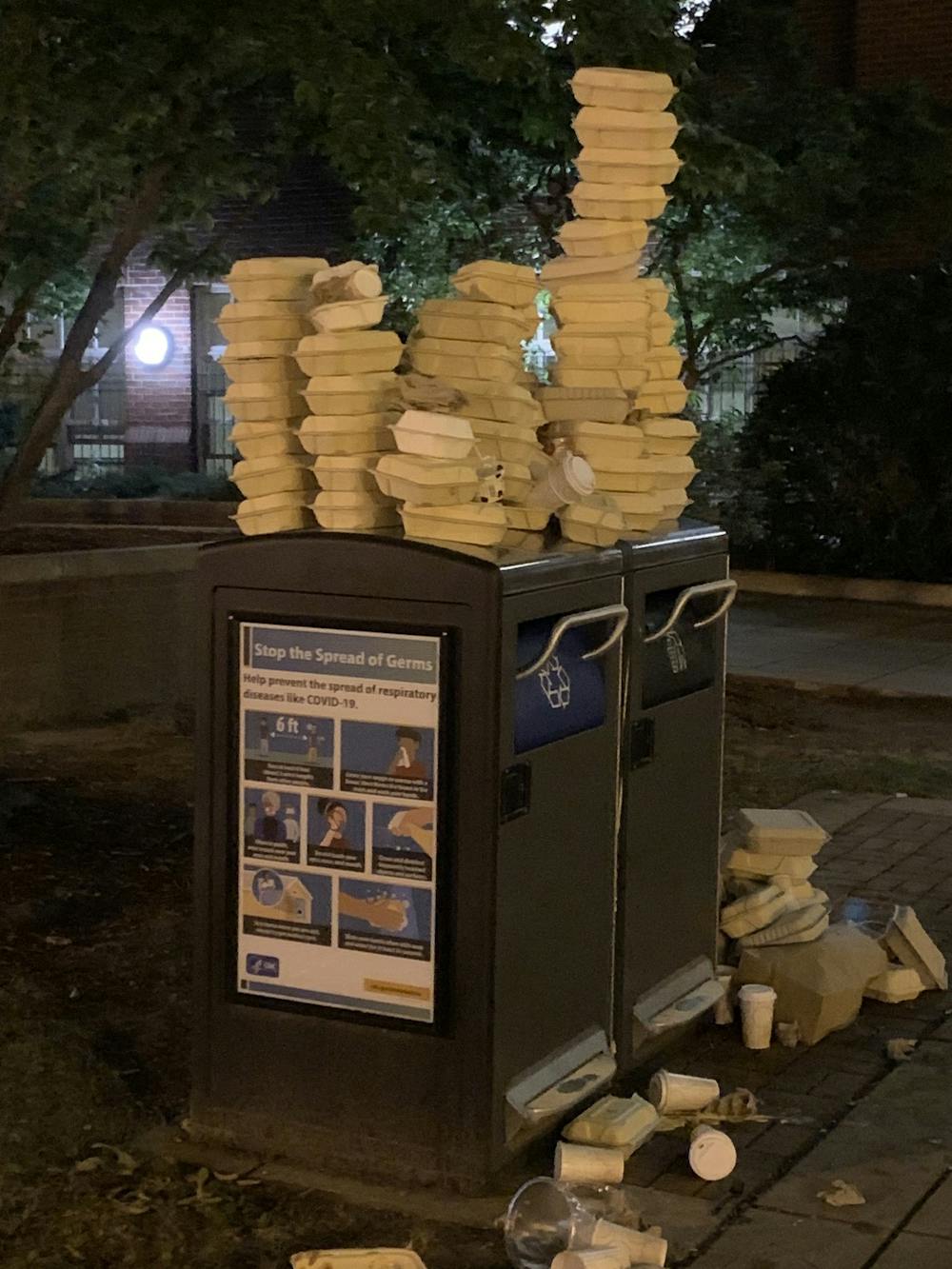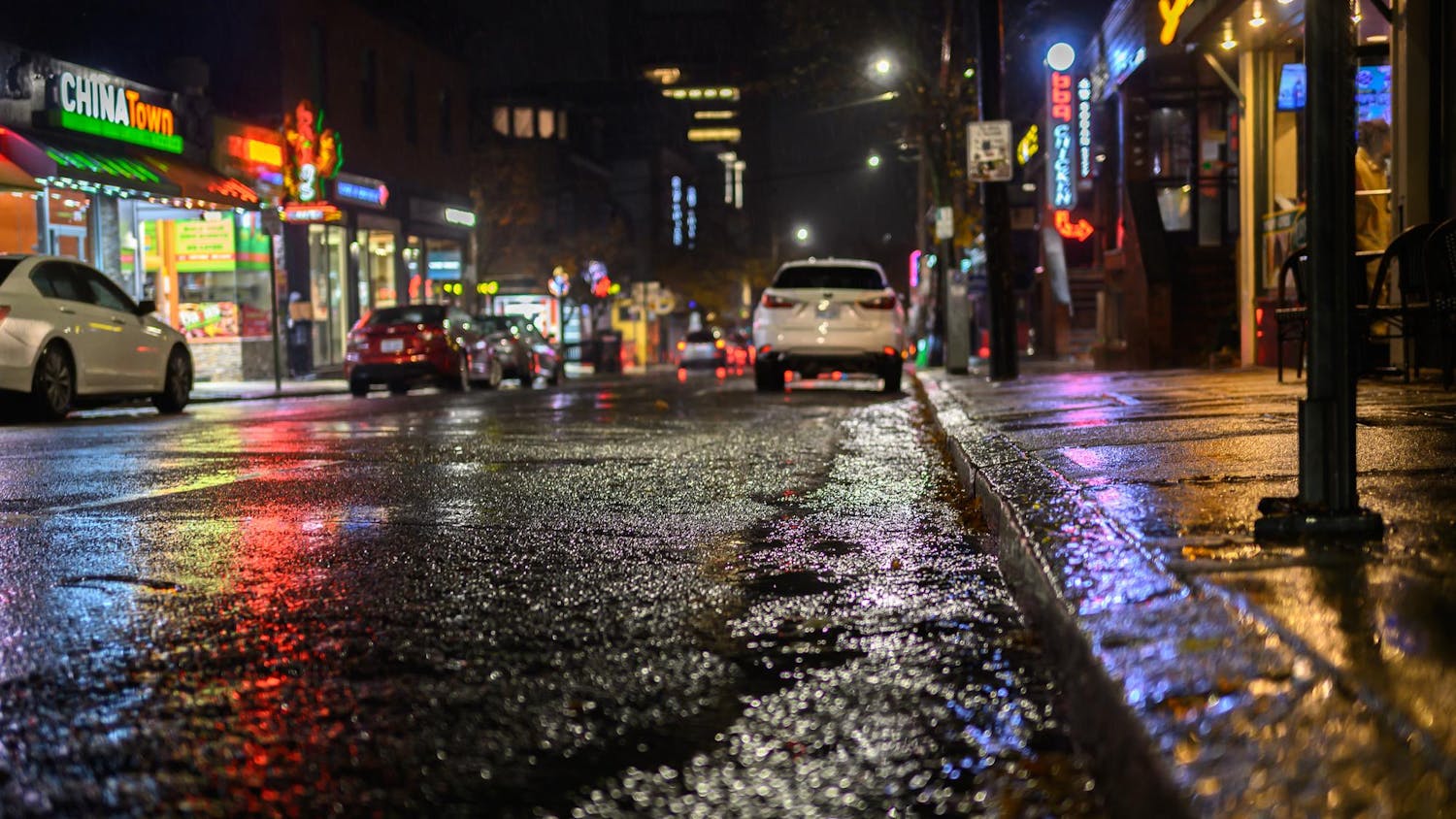Following the Sept. 13 halt of all in-person dining due to an uptick in COVID-19 cases at Brown, community members have noted excessive amounts of food waste and trash piling up outside major dining halls across campus.
On Friday, the University plans to reopen in-person dining. In an interview with The Herald, Russell Carey ’91 MA’06 noted that the pileup of trash was an impetus for the transition back to in-person dining. He hopes that the change will help solve the issue of increased waste across campus.
“With a greater number of students and other community members on campus this month than at any other time since March 2020, the volume of grab-and-go containers and trash was larger than anticipated,” Michael Guglielmo, vice president for facilities management, wrote in an email to The Herald. “Many receptacles were filling up more quickly than our staff could empty them, especially outside the Sharpe Refectory, Andrews Commons and Josiah’s.”
Some students on campus critiqued the buildup of trash seen across dining halls. “It’s not the best sight to see,” Hisham Awartani ’25 said. “When the garbage can is overflowing, I don’t feel comfortable with putting the trash there.”
“It’s disgusting,” Bryanna Pajotte ’24 said. “This is a landfill in front of (the place) where you’re eating.” Pajotte emphasized that the lingering smell of the trash makes eating locations on campus less enticing.
Regarding potential solutions that the administration can implement, Pajotte suggested that Facilities Management could “take out the trash more often or give (us) more trash cans to use.”
Students also expressed concerns beyond the sanitation issues of trash overflow.
“The student body is equally outraged by the inconvenience as they are by the impact on the environment,” said Gabriel Kaplan ’22.5, who lives off campus.
“We have so many plastic things, and we are encouraged to take more (food) than we need,” insreasing the amount of waste produced, Pajotte said.
Bracing for a fully in-person semester, the Facilities Department was not prepared for the sudden transition to takeout-only dining, and had to find new infrastructure to better support the needs of students using University dining halls, Guglielmo explained.
“To address the overflow, we needed to secure and install roll-off containers in these locations, a process that took a few days,” he added. According to Guglielmo, all trash from University dining halls is taken to the Rhode Island Resource Recovery facility by facilities staff members through University trucks or waste management containers.
Guglielmo told The Herald that Facilities has “seen a reduction (in waste overflow) from last week to this week.”
He also added that given adjustments to disposal procedures, they are “confident in (their) ability to keep up with trash in outdoor receptacles throughout the semester,” especially because “the frequency of outdoor eating will likely diminish with the onset of colder weather and earlier sunsets.”
“The temporary surge in trash from grab-and-go meals was a side effect of the dining pause, but one significantly outweighed by the greater priority of protecting health and safety, and a situation that our dedicated team in Facilities Management was able to address successfully and as quickly as possible,” Guglielmo explained.





